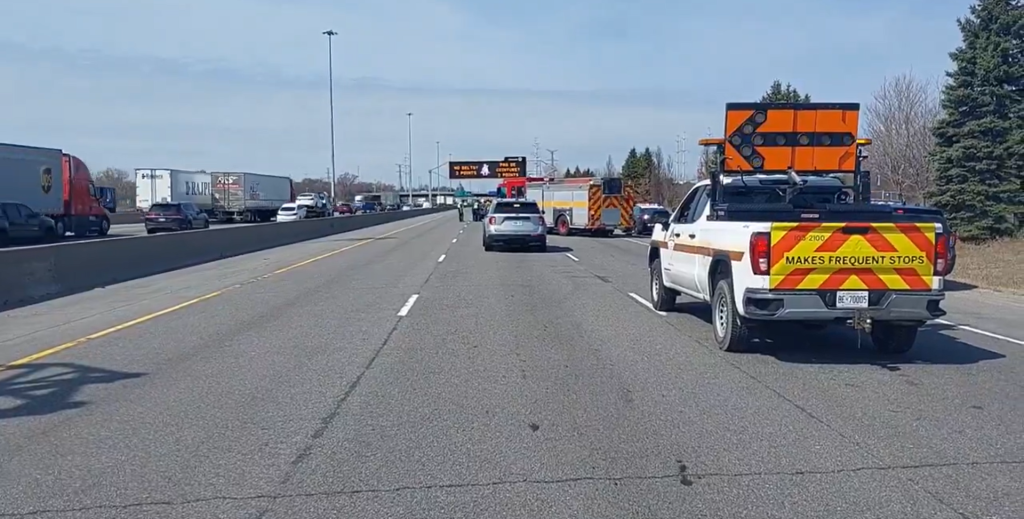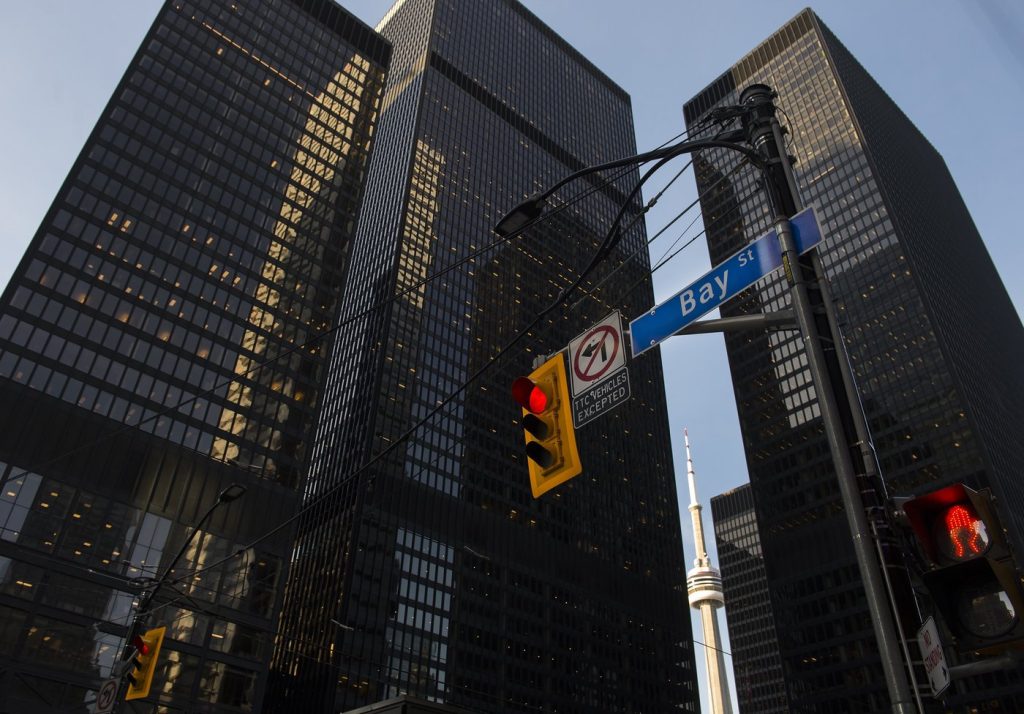Protest continues to prevent Canada-bound traffic from crossing Ambassador Bridge

Posted February 9, 2022 2:42 pm.
Last Updated February 10, 2022 9:13 am.
A protest against COVID-19 measures prevented Canada-bound traffic from crossing a busy international bridge for yet another day as police in Windsor, Ont., looked to diplomacy to solve the problem.
Dozens of cars and trucks have set up on the Canadian side of the Ambassador Bridge, blocking the route to the border. Vehicles are able to get across to Detroit using a difference entrance to the bridge, which is the busiest international commercial border crossing in North America.
“We are taking a diplomatic approach and attempting to negotiate a safe and sustainable resolution,” Windsor police Chief Pamela Mizuno said at a news conference on Wednesday.
“I realize this is an emotional time for many and urge everyone involved not to jeopardize public peace or participate in purposefully illegal events.”
The police chief said her force cannot resolve the situation on its own, and needs help from the province and the federal government.
The blockade that began Monday is in solidarity with similar protests in Ottawa and across the country in recent days over COVID-19 vaccine mandates and broader public health measures.
Windsor police redirected commercial traffic to the Blue Water Bridge but another group of protesters was affecting traffic leading to that crossing, which links Sarnia and Port Huron, Mich. The bridge itself remained open.
Mike Cook is one of dozens who’ve been blocking the Ambassador Bridge in there pickup trucks, big rigs, campers, vans, SUV’s and cars since Monday. He shares his thoughts on why he’s blocking the busiest land border in North America. pic.twitter.com/KQIGriEenI
— Adrian Ghobrial (@AdrianGhobrial) February 9, 2022
Ontario Provincial Police said they closed a section of westbound Highway 402 at Nauvoo Road, about 20 kilometres east of Sarnia, Ont.
Prime Minister Justin Trudeau said he was “very preoccupied” with the protests in Windsor and Sarnia. He said the federal government is working with the province and the City of Windsor.
“We need to stop the blockage of supply chains,” he said. “Jobs are being affected.”
Federal Emergency Preparedness Minister Bill Blair, a former police chief in Toronto, said the law must be upheld.
“Truckers who have kept our shelves stocked with the pandemic are currently being blocked or slowed down while carrying essential goods into our country and from our factories to their markets,” Blair said, calling the protesters’ blockade “unlawful.”
“They’re essentially putting their foot on the throat of all Canadians.”
Premier Doug Ford called for an end to the “illegal occupation and blockade” of the bridge.
“The Ambassador Bridge is one of the most vital trade corridors in our country. The damage this is causing to our economy, to people’s jobs and their livelihoods is totally unacceptable. We cannot let this continue,” he said in a statement on Wednesday.
“I remain confident that our police forces in Ontario, along with Royal Canadian Mounted Police and Canadian Border Services Agency, will take the appropriate steps to address the evolving situations in our cities and bring them to an end.”
Windsor mayor speaks out: “Action will have to be taken”
Windsor Mayor Drew Dilkens said his office has received many complaints from local residents and business owners calling for the forced removal of the demonstrators.
“You have 100 people who are holding hostage part of our national economy,’ he said. “That is why this cannot be allowed to be sustained for any length of time. Action will have to be taken to reopen this bridge.”
Dilkens added he does not want to risk additional conflict.
“While it may be gratifying for some to see the forced removal of the demonstrators, such action may inflame the situation, and certainly cause more folks to come here and add to the protest,” he said.
He said negotiating with the protesters has been challenging because they don’t have clear leadership.
“It’s not like there’s one person you can go to and try to find a resolution. There are pockets of people who are here,” he said. “They’re not all here for the original mandate of freedom convoy in terms of how it started.”
He said the resolution of this crisis requires a whole-of-government approach.
“Leadership (is) required from Ottawa and Queen’s Park to bring down the temperature and resolve these protests peacefully,” he said.
“We need [a] continued partnership with federal and provincial governments and no jurisdictional finger-pointing.”
The economic and social harm that these protests are causing in Windsor, Ottawa and across Canada is significant, Dilkens said.
“Our community will not tolerate this level of disruption for long,” he said.
RELATED: Alberta border blockade hampered by tow trucks reluctant to haul away vehicles: RCMP
The Windsor protest has effectively shut down the Ambassador Bridge, which is the busiest international commercial border crossing in North America. The bridge carries 25 per cent of all trade between Canada and the U.S., and Canadian lawmakers expressed increasing worry about the economic effects.
More than $450 million in goods cross the bridge each day representing one-third of all surplus trade between Canada and the United States, Dilkens said.
“I’ll be brutally honest: You are trying to have a rational conversation and not everyone on the ground is a rational actor,” Dilkens said. “Police are doing what is right by taking a moderate approach, trying to sensibly work through this situation where everyone can walk away, nobody gets hurt, and the bridge can open.”
More than 6,500 people live in the Windsor-Essex area and work outside in the United States and almost all of them use the bridge for their commute.
“This includes health care workers and has spent the past two years saving lives on the frontlines of this pandemic on both sides of Detroit River.”








